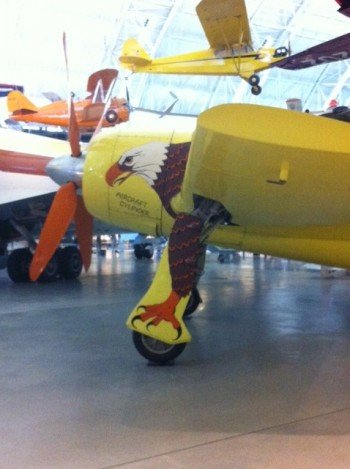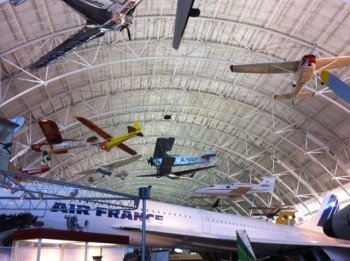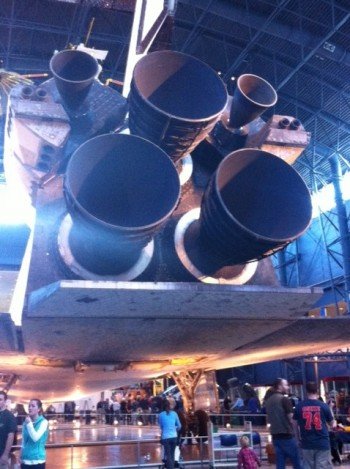ShoreBread decided to take our own little trip for Spring Break with a visit to the Steven F. Udvar-Hazy Center National Air and Space Museum. This branch of the Smithsonian is not located down on the National Mall in D.C.; rather, the museum sits just outside of the city, on the edge of Dulles Air Port’s runway. We’ve been to a couple Smithsonians on our day trips in the past but this one sparked our attention because of the massive amount of air planes and space equipment that is on display. Needless to say, we maintained an anxious countdown to take-off ever since we launched the idea to visit.
The museum came about due to a generous donation by the building’s namesake in 1999. Steven F. Udvar- Hazy was a Hungarian immigrant who co-founded the International Lease Finance Corporation which is a company that leases aircraft. The need for a new museum to display aircraft came about because the original National Air and Space Museum, located on the Mall, had so many airplanes in storage and not enough room to exhibit all of the collected pieces. The new museum now encompasses 760,000 square feet with a multitude of flying vehicles.
While walking around the expansive airplane hangar, visitors can see many different iconic, as well as, lesser known airplanes. Each display is grouped by historical time period. For example, from the World War II era we saw the Enola Gay, the plane that dropped the atomic bomb on Hiroshima, many planes used in battle from Nazi-Germany, and the only surviving Nakajima J1N1 Gekko, which was a Japanese fighter plane used in many kamikaze missions.
From the Cold War era there were planes such as the Air France Concorde, which flew faster than the speed of sound. Also on display is the Lockheed SR-71 Blackbird. This sleek jet black aircraft was used for reconnaissance missions during the Cold War, which, in declassified terms, really means that the plane was used for espionage.
Another section of the building is completely dedicated to vehicles that have been to outer space. We saw satellites that had protected our country from potential nuclear threats, missiles that were prepared to be launched in case of nuclear warfare and a Sirius XM satellite, used to deliver music to earthlings below. The biggest attraction in this part of the museum was the Space Shuttle Discovery which is a retired orbiter that has flown more than any other spacecraft, completing 39 successful missions in over 27 years of service.
Other attractions within the facility include the Donald D. Engen Observation Tower which provides panoramic views of mountains, the surrounding suburban region and the neighboring airport. Because the tower looms 50 meters in the air, we were able to see clear views of a few of Dulles’ runways and were lucky enough to witness multiple planes taking off and landing. This was one of our favorite museum exhibits. The building also holds multiple IMAX Theatres that feature flight themed movies such as Flight Pilot and Hidden Universe. Back amongst the many airplane exhibits, there is also a flight simulator. This little car shaped ride allows guests to take a virtual trip to outer space, letting patrons get the closest experience to entering space without leaving the ground.










